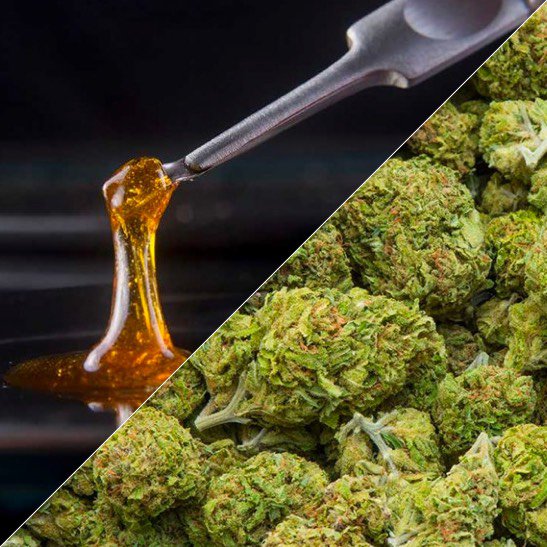Cannabinoids
Last published: March 07, 2025
What are cannabinoids?
The word cannabinoid refers to every chemical substance, regardless of structure or origin, that joins the cannabinoid receptors of the body and brain and that have similar effects to those produced by the Cannabis Sativa plant.1
The three types of cannabinoids that people use are recreational, medicinal and synthetic.
Research has found that the cannabis plant produces between 80 and 100 cannabinoids and about 300 non-cannabinoid chemicals.1 The two main cannabinoids are delta-9-tetrahydrocannabinol (THC) and cannabidiol (CBD).
The most commonly known of the two is delta-9-tetrahydrocannabinol (THC), which is the chemical that is responsible for the psychoactive effects of cannabis.2
The main difference between the two cannabinoids is that THC has strong psychoactive effects, meaning it makes a person ‘high’, whereas CBD is thought to have an anti-psychoactive effect that controls or moderates the ‘high’ caused by the THC. CBD is also thought to reduce some of the other negative effects that people can experience from THC, such as anxiety.3
Commonly used cannabinoids
Explore cannabinoids on the Drug Wheel

The endocannabinoid system
The endocannabinoid system is a unique communications system found in the brain and body that affects many important functions.4
It’s made up of natural molecules known as cannabinoids, and the pathways they interact with. Together, these parts work to regulate a number of activities, including mood, memory, sleep and appetite.3
What do cannabinoids do?
Similar to opioids, cannabinoids produce their effects by interacting with specific receptors, located within different parts of the central nervous system. Simply put, cannabinoids regulate how cells communicate—how they send, receive, or process messages.
Types of cannabinoids
- Cannabis - the dried leaves and flowers (buds) of the cannabis plant that are smoked in a joint or a bong. This is the most common form.
- Hemp - the fibre of the cannabis plant, extracted from the stem and used to make rope, strong fabrics, fibreboard and paper.
- Medicinal cannabinoids including pharmaceutical cannabis products that are approved by the Therapeutic Goods Administration (TGA), including nabiximols (Sativex®) and synthetic cannabinoids such as Dronabinol®.5
- HU-210 - a synthetic analogue of THC, first synthesised in Israel in 1988 and considered to have a potency of at least 100 times that of THC. 6
- UR-144 - similar effects to THC, though slightly less potent than THC.7
- JWH - a series of synthetic cannabinoids created in 1994 by Dr John W. Huffman for studies of the cannabinoid receptors.8
- 5F-ADB - a synthetic cannabinoid that was first identified in late 2014 from post-mortem samples taken from an individual who had died after using a product containing this substance.8
- CUMYL-PEGACLONE emerged in late 2016 on the German drug market.9 Anecdotal reports suggest that there are a number of adverse effects associated with CUML-PEGACLONE.
What do they look like?
Cannabinoids come in many different forms, including:
- leaves, flowers (buds)
- capsules
- edibles (gummies, brownies etc.)
- creams/lotions
- oils
- oro-mucosal sprays
- tinctures
How are they used?
Illicit and synthetic cannabinoids are usually smoked, vaporised or eaten. Pharmaceutical or medicinal cannabinoids come in a variety of products including raw (botanical) cannabis which may be vaporised for medicinal purposes, as well as oils, liquids and oral sprays. Gels have also been developed for direct application to the skin.4
Effects of cannabinoids
The effects of cannabis may be felt immediately if smoked or vaporised, or within an hour or two if eaten. General effects may include:
- euphoria
- feelings of well being
- spontaneous laughter and excitement
- increased appetite
- dry mouth
- quiet and reflective mood.9
What are synthetic cannabinoids?
Over the years a number of synthetic cannabinoid products have been produced. They are similar to those of natural cannabis, but these drugs can be more potent and have been associated with a number of adverse effects.10
Synthetic cannabinoids are molecules designed to mimic the effects of THC. Like THC, these synthetic cannabinoids target the cannabinoid type 1 receptor (CB1R) in the brain, which is responsible for the psychoactive effects of THC in cannabis.10
Many of these substances have developed to the extent that they no longer fit with the traditional cannabinoid classification system.10
Cannabinoids and other drugs
The effects of mixing cannabis with other drugs, including alcohol, prescription medications and over-the-counter medicines, are often unpredictable.
Using alcohol and cannabis at the same time can increase the unpleasant effects, including nausea, vomiting and feelings of panic, anxiety and paranoia.
Some people use cannabinoids to ‘come down’ from stimulants such as amphetamines and ecstasy. The mixing of cannabis and ecstasy has been linked to reduced motivation, impaired memory and mental health problems.11
Reducing harm
Use of cannabinoids is likely to be more dangerous when:
- taken in combination with alcohol or other drugs, particularly stimulants such as crystal methamphetamine (‘ice’)
- driving or operating heavy machinery
- judgment or motor coordination is required
- alone (in case medical assistance is required)
- the person has a mental health problem
- the person has an existing heart problem.12
Dependence and tolerance
Regular cannabinoid use, particularly when started in adolescence, is associated with dependence and lasting cognitive impairment (e.g. lower IQ), poor educational outcome, diminished life satisfaction and achievement, and an increased risk of psychotic disorders.13
Getting help
If your use of cannabinoids is affecting your health, family, relationships, work, school, financial or other life situations, or you’re concerned about someone else, you can find help and support.
Call the National Alcohol and Other Drug Hotline on 1800 250 015 for free and confidential advice, information and counselling about alcohol and other drugs
Help and Support Services search
Find a service in your local area from our list. Simply add your location or postcode and filter by service type to quickly discover help near you.
If you're looking for other information or support options, send us an email at druginfo@adf.org.au
Path2Help
Not sure what you are looking for?
Try our intuitive Path2Help tool and be matched with support information and services tailored to you.

- Fundacion Canna. What are cannabinoids? Where can cannabinoids be found? n.d. [cited: 03.02.2022].
- National Institute of Drug Abuse. What is marijuana? 2020.
- Cannabis Information and Support. Weeding out the differences between THC vs. CBD.n.d. [cited: 11.03.2022].
- Nazarenus C. Medical Cannabis Handbook for Health Professionals New York Springer Publishing Company 2020.
- Therapeutic Goods Administration. Medicinal cannabis products: Patient information 2018 21.03.2022].
- Hruba L McMahon L. The cannabinoid agonist HU-210: pseudo-irreversible discriminative stimulus effects in rhesus monkeys. European Journal of Pharmacology. 2014 727.
- World Health Organization. UR‐144 Critical‐Review Report. Switzerland 2014
- United Nations Office of Drug Control UNODC Laboratory and Scientific Service Portals. Synthetic cannabinoids n.d. [21.03.2022].
- Brands B Sproule B Marshman J. Drugs & Drug Abuse. 3rd ed. Ontario: Addiction Research Foundation; 1998.
- European Monitoring Centre for Drugs and Drug Addiction. Synthetic cannabinoids drug profile n.d. [21.03.2022].
- Banister S, McGregor I, Gerona R. Labs make new, dangerous synthetic cannabinoid drugs faster than we can ban them. The Conversation 2015
- KFX Learning of Substance. Drug Facts: Synthetic Cannabinoids. n.d. [cited: 22.06.2022].
- Panlilio L, Goldberg S, Justinova Z. Cannabinoid abuse and addiction: Clinical and preclinical findings. Clin Pharmacol Ther. 2015;97(6).
